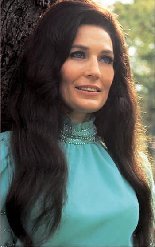
Yellowstone National Park is an American national park located in the western United States, largely in the northwest corner of Wyoming and extending into Montana and Idaho. It was established by the U.S. Congress and signed into law by President Ulysses S. Grant on March 1, 1872. Yellowstone was the first national park in the U.S. and is also widely held to be the first national park in the world. The park is known for its wildlife and its many geothermal features, especially Old Faithful geyser, one of its most popular. While it represents many types of biomes, the subalpine forest is the most abundant. It is part of the South Central Rockies forests ecoregion.
Although Native Americans have lived in the Yellowstone region for at least 11,000 years, aside from visits by mountain men during the early-to-mid-19th century, organized exploration did not begin until the late 1860s. Management and control of the park originally fell under the jurisdiction of the United States Department of the Interior, the first Secretary of the Interior to supervise the park being Columbus Delano. However, the U.S. Army was eventually commissioned to oversee management of Yellowstone for a 30-year period between 1886 and 1916. In 1917, administration of the park was transferred to the National Park Service, which had been created the previous year. Hundreds of structures have been built and are protected for their architectural and historical significance, and researchers have examined more than a thousand archaeological sites.
Everywhere you look, you’re bound to see animals; grizzlies, moose, wolves, elk & deer, black bears, mountain goats, bighorn sheep, coyotes, and bison, roaming through the forest or plains. You can also spy small animals, like rabbits, squirrels, ground squirrels, and chipmunks.
Nineteen different species of fish can be found in the rivers. Of these 13 are native; and 6 were introduced. Yellowstone also has birds; lots of birds. Park records document nearly 300 bird species, including raptors, songbirds, shorebirds, and waterfowl. Many are migratory, but approximately 150 species nest in the park. Visitors may be able to spot trumpeter swans, bald eagles, golden eagles, ospreys, and peregrine falcons.
Admire Old Faithful
Named after its frequent eruptions, Old Faithful is the most famous geyser in the world and is a must-see when you visit Yellowstone. Every hour or so, Old Faithful shoots out up to 8,000 gallons of boiling water that can reach heights of up to 185 feet. Although park rangers can predict with 90% accuracy when the geyser will erupt, you can do the same by simply looking at the crowds. If you reach Old Faithful and the benches around it are empty, you’ll know the geyser has recently erupted. However if the area is full of spectators and you see some bubbling and splashing, it’s time to grab your camera!
If you want to read more, go here:
 Thank you Dave Russell for giving me this love!
Thank you Dave Russell for giving me this love!HOW TO OBSERVE
- Look for a community garden in your area.
- Organize a seed and perennial plant swap with neighbors and friends.
- Join a garden club. There isn’t one near? Start one!
- Visit your local nursery or garden center—you will be amazed and excited by all the beautiful options























